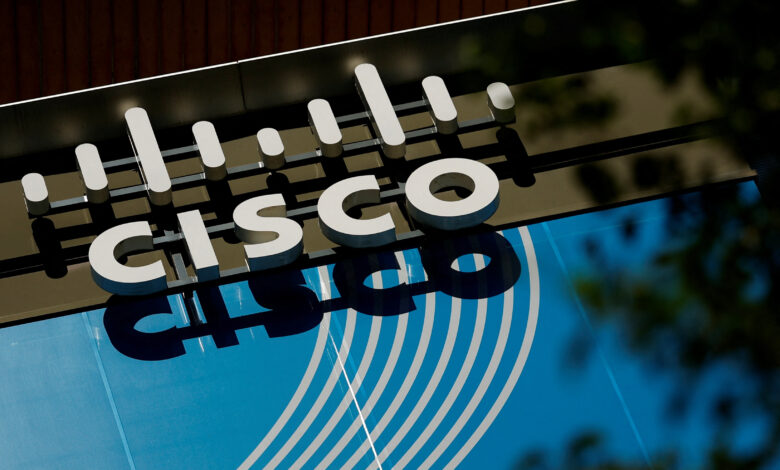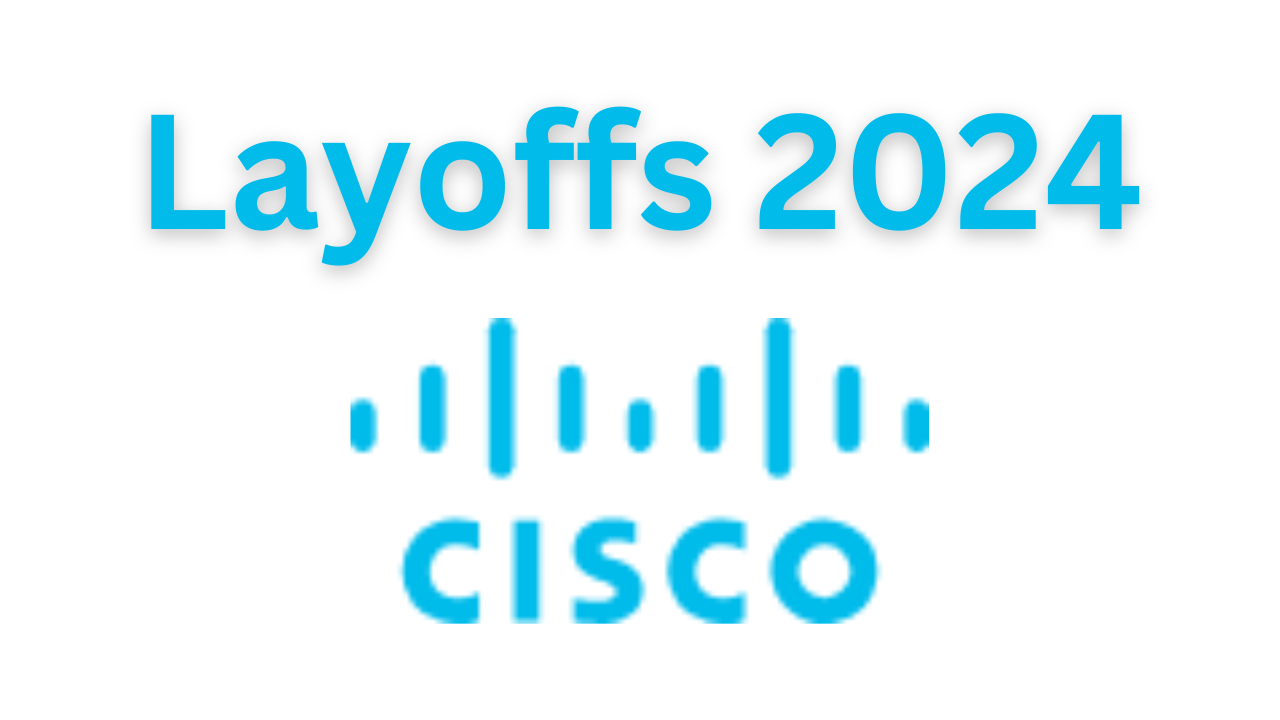Cisco Follows Other IT Majors Announces 4000 Or More Job Cuts, Reduces Annual Revenue Forecasts; Why Is Big Tech Still Cutting Jobs?
The tech industry is currently grappling with tough challenges - managing a ballooned workforce during the pandemic, dipping revenue and advancing artificial intelligence technologies. With geopolitical events getting more complicated day by day and a slowed economy, the tech industry finds itself at a crossroads where, on one hand, significant layoffs have been announced in a bid to cut costs and, on the other, a strategic shift towards artificial intelligence (A.I.) development. The ongoing developments have set the stage for yet another tech giant - Cisco Systems, which recently announced significant job cuts alongside revisions to its revenue targets.

Following a year marked by significant layoffs, job reductions at major tech firms persist into the initial month of 2024.
After SAP, Cisco Systems has disclosed plans to trim 5% of its global employee base, equating to over 4,000 positions. At the same time, the company has revised its annual revenue projection downward in the face of economic uncertainty.
After Cisco’s downward revision of its forecast from the previously projected $53.8 billion to $55 billion to a range between $51.5 billion and $52.5 billion, shares of the networking equipment manufacturer plummeted by over 5%, during extended trading on Wednesday,
Industry analysts anticipate sustained pressure on the demand for Cisco’s products, particularly as clients within the telecom sector curtail spending, prioritizing the reduction of surplus inventory in networking gear.
According to Joe Brunetto, an analyst at Third Bridge, the accumulation of networking hardware inventory is expected to resolve itself by the latter half of 2024 or early 2025. Meanwhile, Cisco is directing its attention toward artificial intelligence, forging partnerships such as the one with Nvidia to propel growth.
CEO Robbins revealed that Nvidia agreed to integrate Cisco’s ethernet alongside its own technology, widely utilized in data centers and A.I. applications.
Cisco’s third-quarter revenue is anticipated to fall between $12.1 billion and $12.3 billion, a figure below the estimated $13.1 billion, as per data from LSEG.

The Solution To The Problems
Reports earlier this month indicated that the company, boasting an employee count of 85,000, was devising plans for layoffs and restructuring to sharpen its focus on high-growth sectors.
It anticipates incurring an $800 million charge related to layoffs before tax, covering severance and other associated costs; most of these charges are expected to be recognized in the first half of fiscal 2025.
In the second quarter, Cisco reported an adjusted profit of 87 cents per share and revenue of $12.79 billion, surpassing estimates provided by LSEG.
The Layoffs Spiral
The new year started with Google announcing layoffs affecting several hundred employees, foreshadowing further reductions to follow.
Subsequently, Amazon implemented job cuts within its Prime Video division, while Meta quietly downsized its middle management.
Likewise, Microsoft also underwent layoffs, slashing 1,900 jobs within its video game sector.
The trend of layoffs persisted despite significant increases in sales, profits, and share prices. According to tech insiders and analysts, this paradox underlines the industry’s dual challenges: managing rapid workforce expansion during the pandemic while aggressively pursuing advancements in artificial intelligence.
Instead of ramping up hiring by the thousands each quarter, companies are now funnelling billions into the development of A.I. technologies, which they envision as potentially worth trillions in the future.
The decision was further cemented by Mark Zuckerberg, Meta’s chief executive, who emphasized the necessity of layoffs and cost control during a recent call with analysts, citing the imperative to invest in ambitious, long-term A.I. projects.
He acknowledged that operating as a leaner company is conducive to pursuing such visions effectively.
To put into perspective how the entire game has changed – from the end of 2019 through 2023, tech firms scrambled to meet surging consumer demand as individuals, confined to their homes, splurged on new devices and increased their online activity.
During this period, Apple, Amazon, Meta, Microsoft, and Alphabet (Google’s parent company) collectively added over 900,000 jobs. However, as the boom tapered off, adjustments became inevitable.

Meta, Amazon, Microsoft, Google, and Apple collectively shed approximately 112,000 jobs from their peak levels in 2021 and 2022, yet they remained significantly larger and more profitable than pre-pandemic levels.
Today, these five companies collectively employ 2.16 million individuals, marking a 71 per cent increase from pre-pandemic levels. In terms of revenue, they generated a combined $1.63 trillion in their most recent fiscal years, reflecting an 81 per cent surge compared to five years prior.
Hence, when it came to Wall Street, these tech titans have been handsomely rewarded – over the past year, Meta, Amazon, Microsoft, Google, and Apple collectively saw their market value soar by nearly $3.5 trillion.
But here is the paradox, despite significant job cuts at various other firms, employment within the broader tech industry is poised for a rebound.
In January, the tech sector experienced its second consecutive month of job growth, with an additional 18,000 workers added, as reported by CompTIA, a leading technology education and research organization.
Notably, its unemployment rate stands at 3.3 per cent, below the national average of 3.7 per cent.
Tim Herbert, Chief Research Officer at CompTIA, observes, “We undergo cycles where there’s intense emphasis on innovation, followed by a shift towards bottom-line focus. However, instances like Amazon reducing Alexa workforce or Google downsizing Pixel phone staff signal a drive for improved margins. Companies are strategically trimming and reallocating resources.”

GAI To Blame
The advent of generative artificial intelligence (GAI) has fundamentally reshaped business priorities across industries.
GAI, capable of answering queries, generating images, and even writing code, gained rapid traction following the viral success of OpenAI’s chatbot, ChatGPT.
Hence, Tech giants are racing to recruit engineers proficient in developing A.I. systems.
In the United States alone, there were 180,000 job listings related to A.I. last year, spanning roles in software development, semiconductor engineering, and cloud computing, according to CompTIA.
Moreover, the number of A.I. job openings has continued to expand this year.
These skilled professionals are instrumental in enhancing chatbots and constructing other A.I. systems for Microsoft, Google, Amazon, and Meta. Apple, not to be left behind, too is actively seeking A.I. engineers as it gears up to unveil its own A.I. offering later in the year.
Therefore, the investment in expensive chips and supercomputers crucial for training and constructing A.I. systems has reached the billions. Meta, by the year’s end, anticipates acquiring 350,000 specialized chips from Nvidia, each priced at an estimated $30,000.

The Strive For Balance
The surge into generative A.I. has been accompanied by cutbacks elsewhere.
Google’s layoffs resulted in a reduction in personnel dedicated to augmented reality technology. Meta, having laid off nearly 20,000 individuals the previous year, has begun trimming certain program managers responsible for overseeing various projects and ensuring team adherence to schedules.
Over the span of two years, from 2020 to 2021, Amazon doubled its workforce to 1.6 million employees in a bid to manage the surge in e-commerce orders.
The expansion included a rise in corporate roles from 200,000 to 380,000. However, the company has since eliminated approximately 30,000 corporate positions and around 50,000 other roles; however, leadership has indicated that these jobs will not be reinstated in the near future.
Following layoffs exceeding a thousand employees in January, Google cautioned its workforce about the possibility of ongoing rolling layoffs throughout the year.
Ruth Porat, Alphabet’s chief financial officer, emphasized during a call with analysts that the exception to this would be the recruitment of top engineers.
In contrast to its counterparts, Apple exercised caution in hiring during the pandemic; however, as sales of iPhones, iPads, and Macs declined last year, the company began downsizing its workforce.
For the first time in at least 15 years, Apple reported a decrease in total employee count, despite avoiding significant layoffs.
The reduction of 3,000 jobs reported by Apple at the close of its most recent fiscal year primarily occurred through attrition. Additionally, the company encouraged some managers to administer more stringent annual performance evaluations.
Microsoft stands as the sole tech corporation that did not announce a decrease in its overall workforce. By the conclusion of its 2023 fiscal year, the company maintained a staff of 221,000 individuals, matching its post-pandemic peak.
Investors have acknowledged Microsoft’s steadfastness, rewarding it with considerable acclaim; just last month, it surpassed Apple to become the world’s most valuable company. Presently, its market capitalization exceeds $3 trillion.

The Viewpoint
Global firms, particularly those in the I.T. sector, are undergoing a phase of job reduction for several reasons, reflecting both industry-specific challenges and broader economic shifts.
Firstly, technological advancements, such as automation and artificial intelligence, have enabled companies to streamline operations and increase efficiency, often resulting in a decreased need for specific roles.
Secondly, existing economic pressures have forced companies to reassess their workforce needs in light of changing consumer behaviours and market conditions.
Many firms, including those in the I.T. sector, have faced disruptions in supply chains, shifts in consumer demand, and uncertainties regarding future economic stability, all of which have contributed to a more cautious approach to hiring and retention.
Additionally, increased competition, globalization, and market saturation in certain sectors have forced companies to seek cost-saving measures, of which reducing headcount may be one strategy.
Thus, in an effort to maintain competitiveness and preserve profitability, firms may opt to trim their workforce to streamline operations and reduce overhead costs.
Similarly, strategic shifts in business priorities, such as reallocating resources towards research and development, innovation, or digital transformation initiatives, may necessitate restructuring efforts that involve job cuts.
Companies have chosen to prioritize investments in areas deemed critical for future growth while simultaneously reducing expenditures in other areas, including labour costs.




